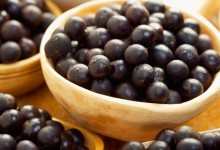Parkinson’s disease is brought about by the decrease of the neurotransmitter dopamine, which manages mobility and many other neurological functions. Symptoms include the loss of control of motor functions, which leads to shaking, balance troubles, and stiffness. It’s also been understood for greater than TWENTY years that the mid brain area of patients experiencing Parkinsons Disease demonstrate a 40-50 % decline in total glutathione levels. Glutathione, the body’s Master Antioxidant makes a contribution in enabling the body minimize oxidative stress and long term inflammation it creates.
“Prolonged exposure to chemicals considerably raises one’s risk of developing Parkinson’s disease,” Dr. goes on to say. “There’s a famous saying, which is essentially a cliché that heredity loads the gun and environment pulls the trigger. That looks true with Parkinson’s and pesticides.
In addition to Dr. Bronstein’s work, a new study released by Italian scientists in the journal of Neurology concluded that prolonged exposure to herbicides and pesticides boosts risk of Parkinson’s by thirty three to 80 percent.
Over 50,000 Americans are diagnosed with Parkinson’s Disease each year, and experts state it’s progressively more clear that the chemicals used in farming are contributing to many of the problems. “Pesticides are easily the major environmental Parkinson’s disease risk factor,” says Jeff Bronstein, M.D., a professor of neurology at UCLA and director of the institution’s Movement Disorders Program.
The Dirty Dozen.
Every year the Environmental Working Group (EWG) releases its “Dirty Dozen” selection of the very most chemical-laden produce. It also delivers its “Clean 15” list of the fruit and vegetables most unlikely to have major amounts of pesticides.
The “Dirty Dozen” are apples, celery, grapes, peaches, strawberries, spinach, bell peppers,imported nectarines, cucumbers, potatoes, cherry tomatoes, and hot peppers.
The EWG also specified concerns about kale, collard greens, and summer squash.
The “Clean 15” are onions, pineapples, avocados, cabbage, frozen peas, papayas, mangoes,asparagus, eggplant, kiwi, grapefruit, corn, cantaloupe, sweet potatoes, and mushrooms.
Talking about Glutathione and Parkinson’s Disease.
The glutathione declines observed earlier in this article are one of the earliest potential indicators in the pre-symptomatic stages of Parkinson’s Disease. Oxidative harm to lipids, protein and DNA in the mind of Parkinson’s Disease patients is consistent with the reduction of the antioxidant functions provided by GSH. It is not out of the ordinary for the intellect to become influenced by a downturn of glutathione levels given that the brain utilizes a big percentage of the total oxygen used by our body. The metabolic activities that use oxygen create free radicals as a by-product.
MaxONE – a glutathione precursor offers an opportunity to improve your glutathione levels and help fight oxidative stress.
